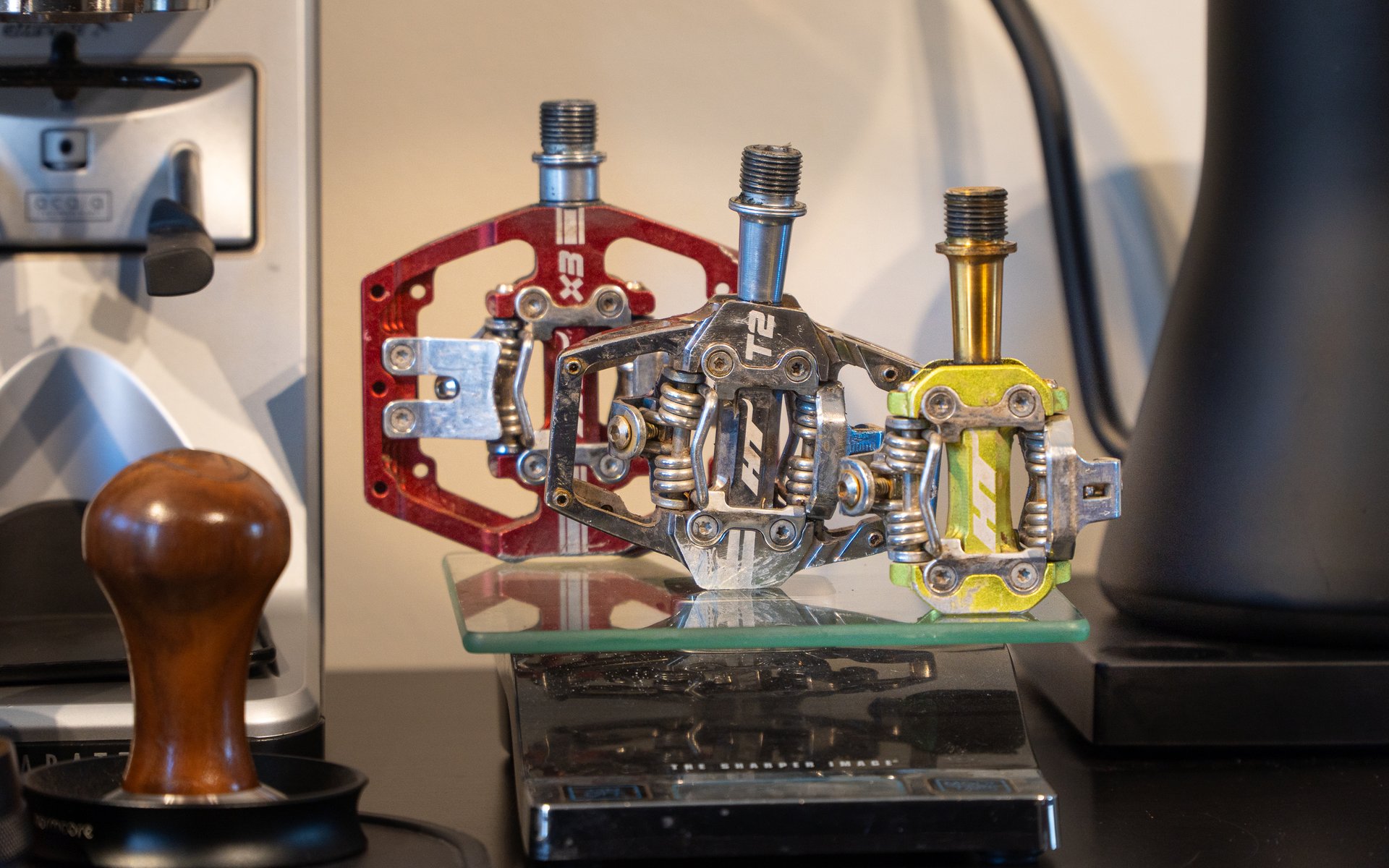
REVIEW
3 Pedal Models from HT
There's been relatively few constants in my bike riding life - my ride style and type evolves and technology advances. Thinking back to my first "full size" mountain bike, an ex-rental from Moab Cyclery (it was grey - I don't remember what brand. If anyone knows what the rental fleet was at that shop circa 1996 or 1997, let me know...), there's only a few parts from anything in my current fleet that would bolt on. Cockpits have widened but steerer tubes have stayed constant, and if I had to bet I'd say it was a 30.9mm seat tube, so perhaps I could put a dropper on it. Disc brakes wouldn't bolt on, I'd need a new bottom bracket to install cranks, and it certainly wouldn't fit a T-Type derailleur. I don't own any wheels that aren't 29/700c. My water bottle cage would swap right over, and so would my pedals.
And not only would my pedals swap right over, but they'd be pretty similar to what I used at the time - the venerable SPD. I've been using SPDs interspersed with a modicum of flat pedal time on my mountain bikes since, well, basically forever. I don't think I ever managed to scrounge together enough cash from chores to upgrade the cantis to newfangled v-brakes, but I do have distinct memories of carefully pedaling around the grass at Phil Baux Park learning to clip in and out. And then, like most of us, once I felt like I had the skill mastered I went for a ride and fell over at the first stop sign.
Looking back, I wouldn't change much. I've been running two pairs of XT and XTR Trail since roughly 2017 or so; with an annual-ish teardown, clean, regrease and re-tension they've been flawless.
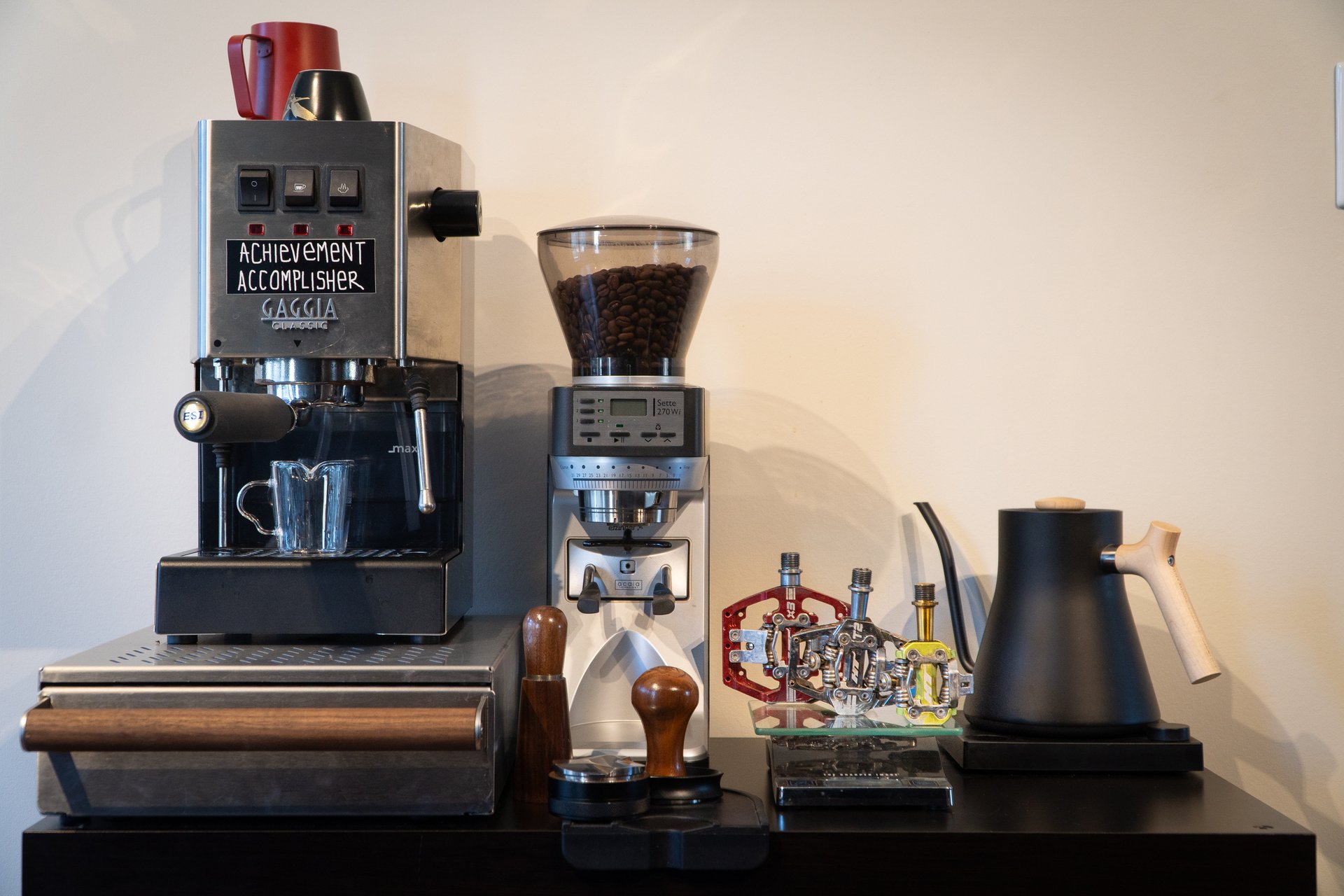
Three sets of pedals, and nearly as many ways to turn beans into coffee.
So when the opportunity to try something different came up, I found myself in a strange condition of eagerness and fear. Changing up 20-25% of the intersections between bike and body isn't trivial, and the ability to get in and out of pedals can be the difference between ending a ride with a cold beverage or in the ER. I'm also not interested in having multiple pedal systems across my bikes - I want my bikes and shoes to all work together; it's easy to envision showing up to a ride and discovering you grabbed a pair of shoes with the wrong cleats.
So I went all in on HT - three distinctly different sets of pedals to cover everything from gravel to downhill and knowing this might be a bit of a recalibration and process, I committed for a few months.
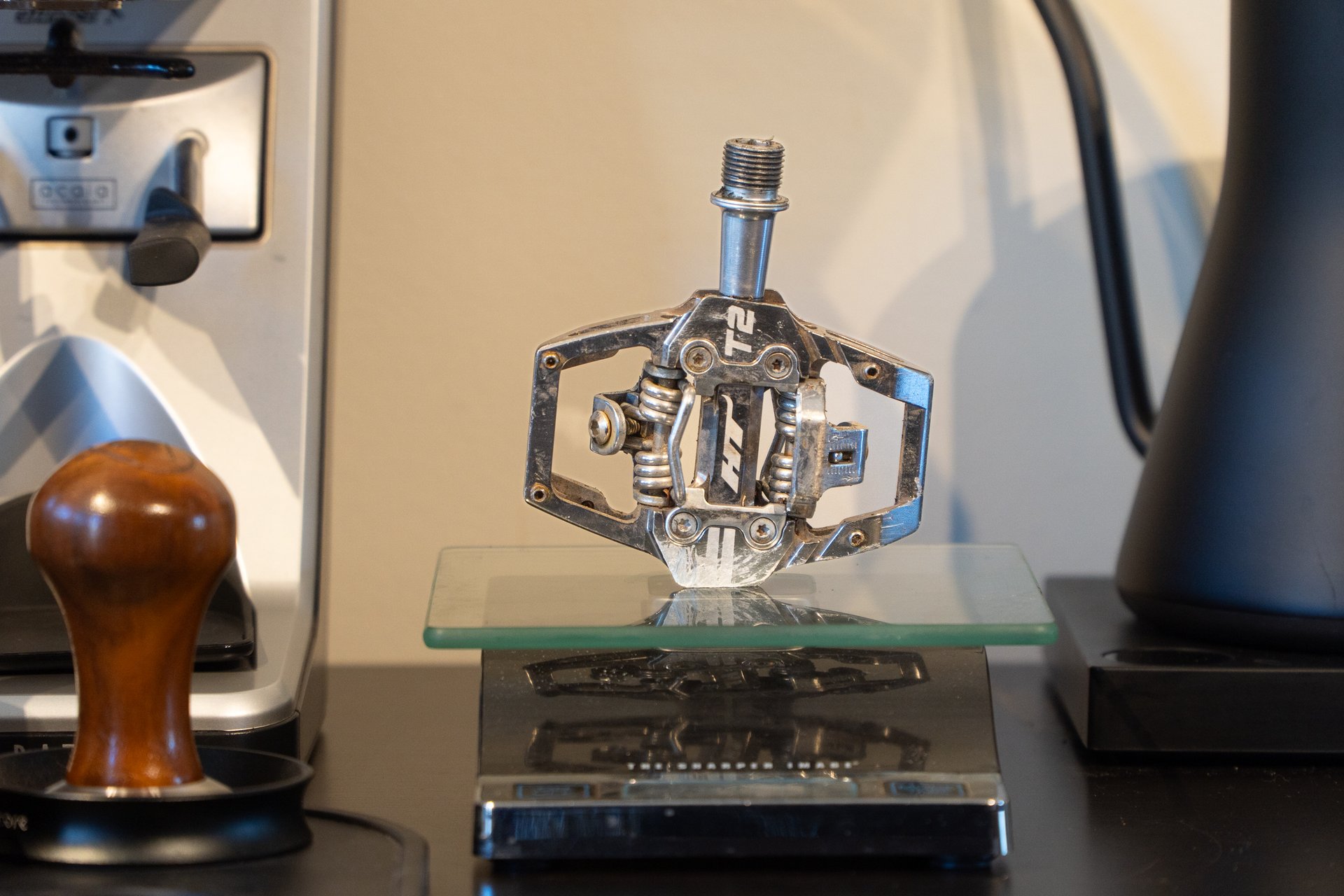
The T2 is familiar in size and shape to my go-to, the Shimano Trail line of pedals.
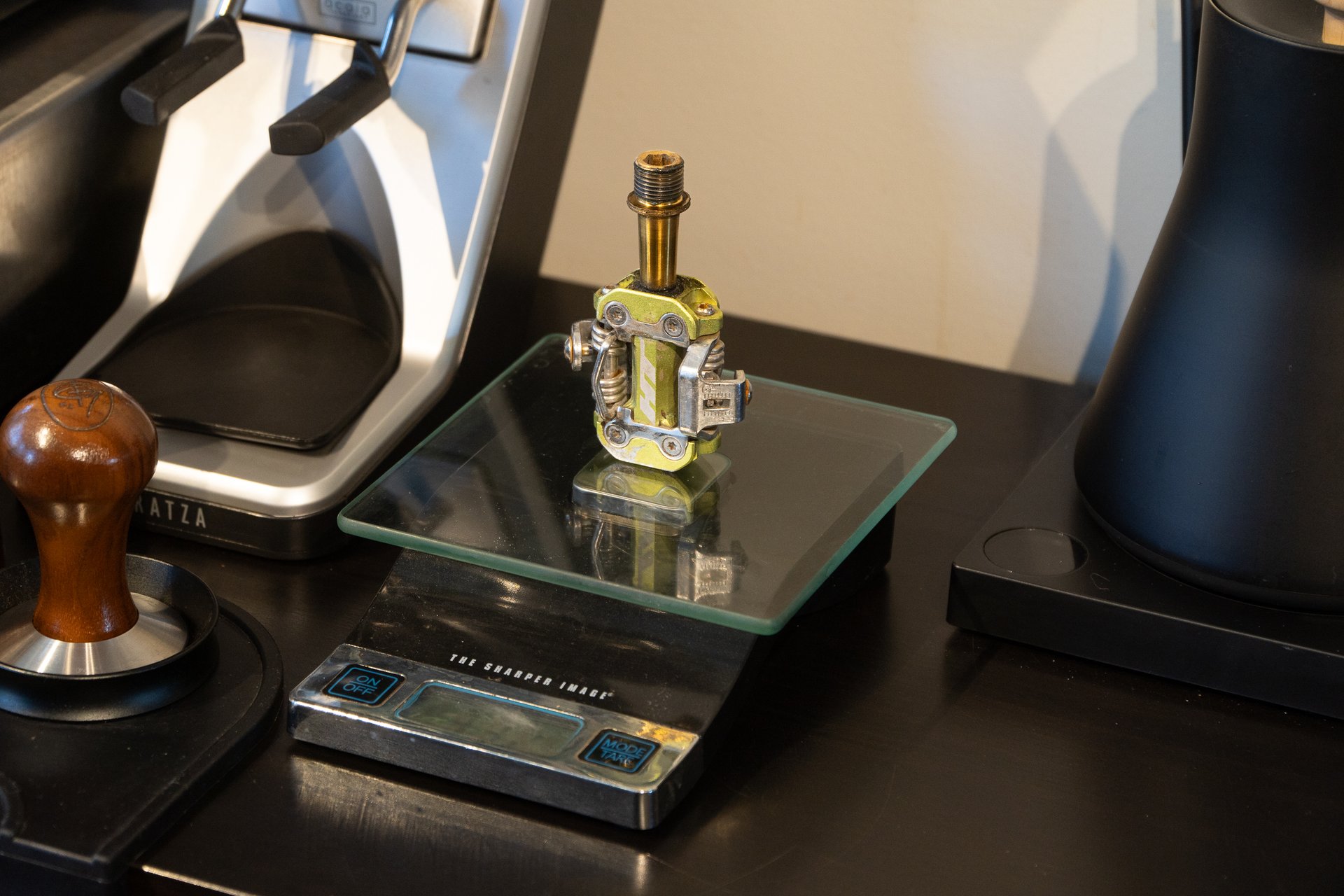
The dainty, Ti-spindled M2T saves 45g over the non-weight-restricted M2.
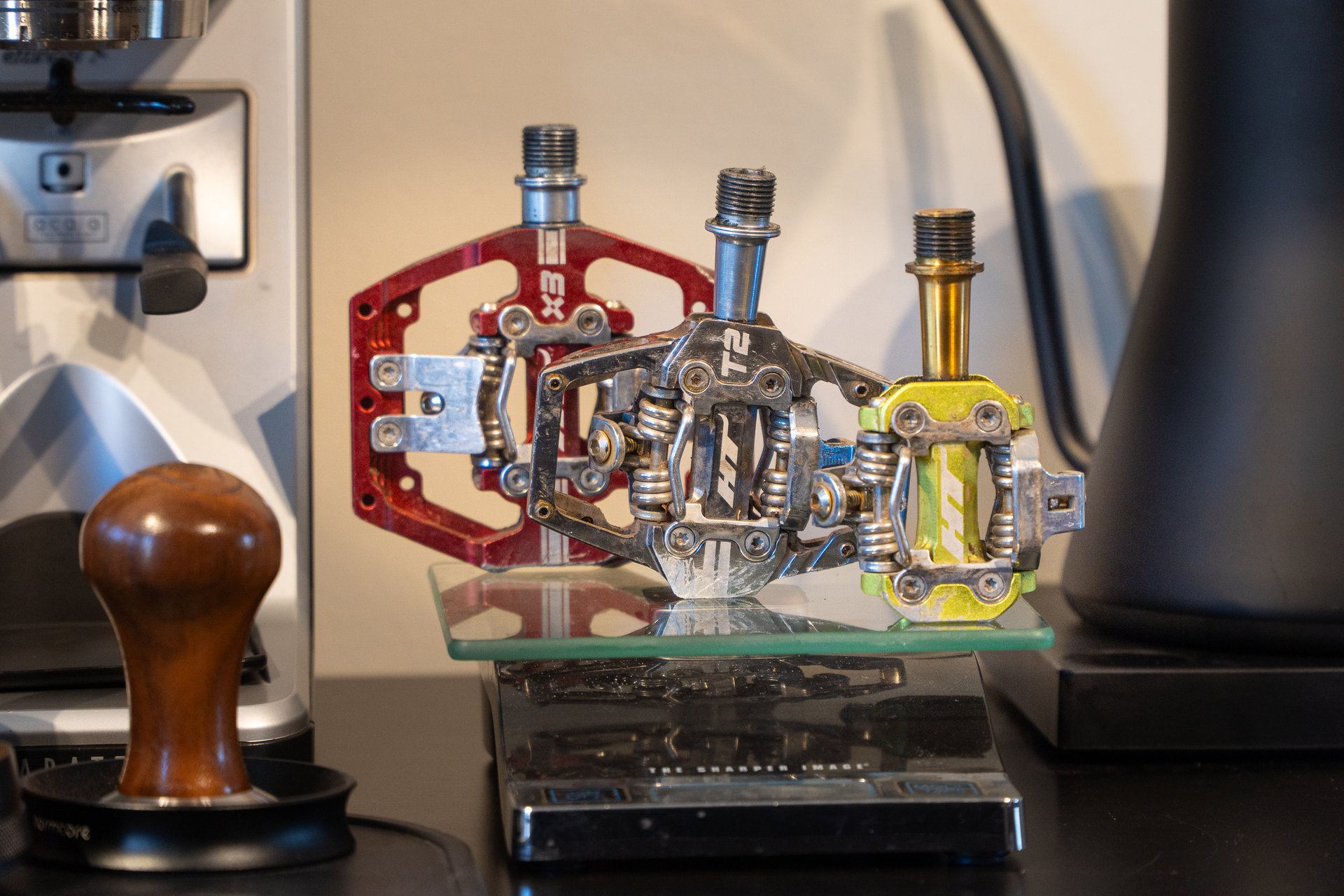
In hindsight, this photo would have been smarter with the pedals inverted to show the difference in q-factor.
Reviewed Pedals
| Pedal | Use | Axle | Listed Weight (g) | Q Factor (mm) | Dimensions (mm) |
|---|---|---|---|---|---|
| M2T | Gravel/XC | Ti | 260 | 54.5 | 56 x 41 x 17.5 |
| T2 | Trail/Enduro | Chromoly | 376 | 56 | 68 x 84 x 17 |
| X3 | Enduro/DH | Chromoly | 476 | 55 | 85 x 90 x 14 |
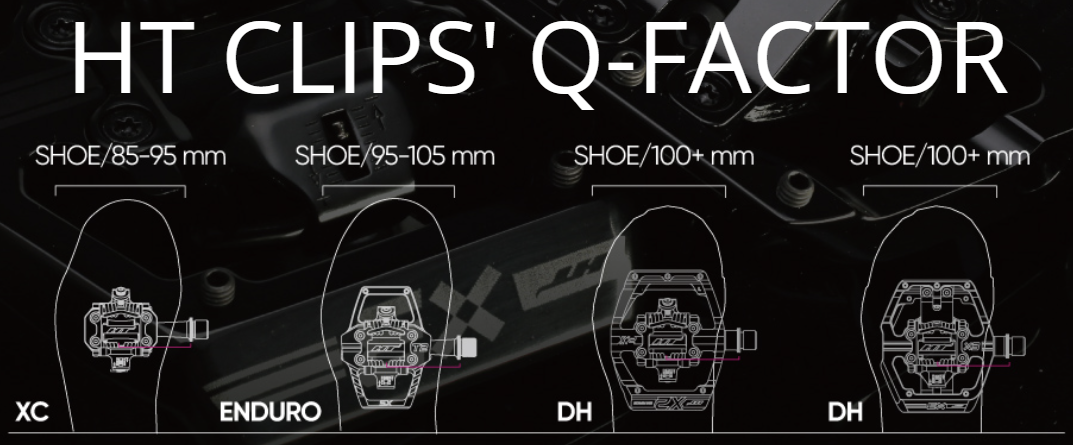
HT provides some graphic insight into the slight variations in Q-factor across the range of pedals.
Pedals
Out of the box, all three sets of pedals share a few characteristics. Fit and finish are excellent, and the axles are quite tight. All three share the same mechanism with a different enclosure (or in the case of the M2/M2T, no enclosure). Both the T2 and X3 can have traction pins installed, which are included. Presuming you're going to abuse downhill pedals more, the X3 also has a removable steel plate to protect the spring and mechanism from impacts. I've been primarily using the T2 with pins, and the X3 without.
To get rolling, I installed pedals with the requisite washers and Phil Wood on three bikes - my Landyatchz Ti, Rocky Mountain Element, and We Are One Arrival 170 in what seemed like the logical progression from light to heavy. Notably all six pedal spindles were quite tight out of the box; they rotate on a sealed bearing and bushing combo that clearly needed some break in.
As is my preference, they were all set close to minimum tension. I'm not someone who likes pedals to rule with an iron fist. All pedals arrived with cleats and shims, but I also picked up a few extra sets because I have too many pairs of shoes, and cleats are one key aspect that differentiates HT from SPD systems and some other competitors.
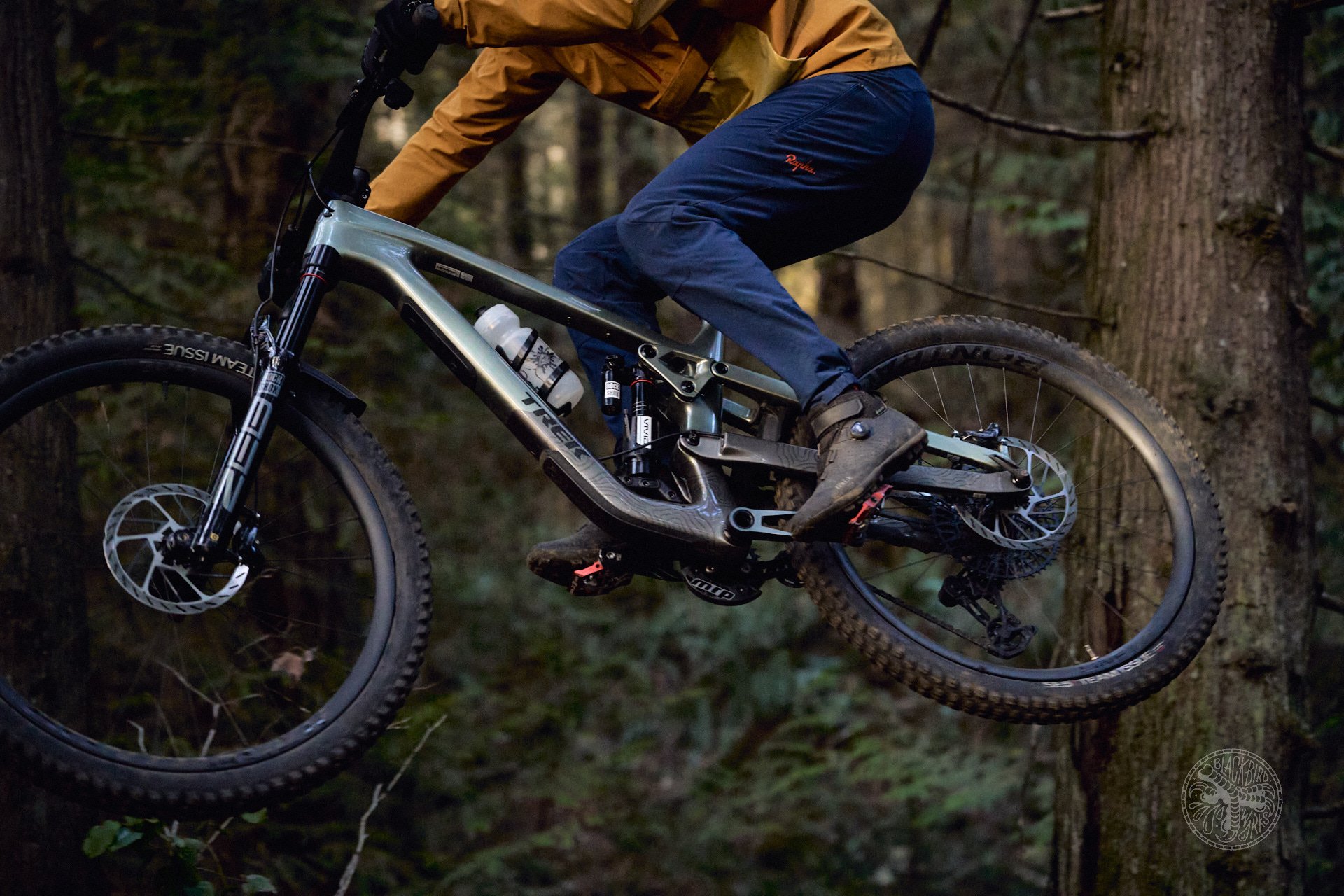
The X3 pedals fit right in on a sled like the Trek Slash, which I reviewed here.
Cleats
It's worth delving into the variety of cleat options available for the HT system - the ability to adjust not only release tension at the pedal but also degrees of float via cleat changes makes the HT system more adjustable than some competitors.
- The default option, the X1 cleat, offers four degrees of lateral 'float'. Said another way, your foot can rotate four degrees around the pedal axis before the cleat contacts the pedal mechanism to disengage. It takes a few more degrees for the cleat to push through the spring tension and release. This is a similar amount of float to SPDs.
- The X1F cleat offers double the float, for 8 degrees of movement.
- The X2 cleat is "pro-only", readily available for purchase to non-pros, and offers additional release tension.
- The X1E has a similar 4 degrees of float to the X1, however like the comparable Shimano SH56 multi-release cleat it allows escape by pulling up or rotating your foot in other planes, which may be useful for beginners, or those with an injury or physical limitation.
Figuring it'd be good to get acquainted and keep things as similar as possible for decades of muscle memory, I started with X1 cleat installations all across the shoe rack. It took a few rides to get cleat rotation correct - I ride a bit heels-in and I found I needed to be a bit more precise with alignment in this system than my SPDs. I am not sure why.
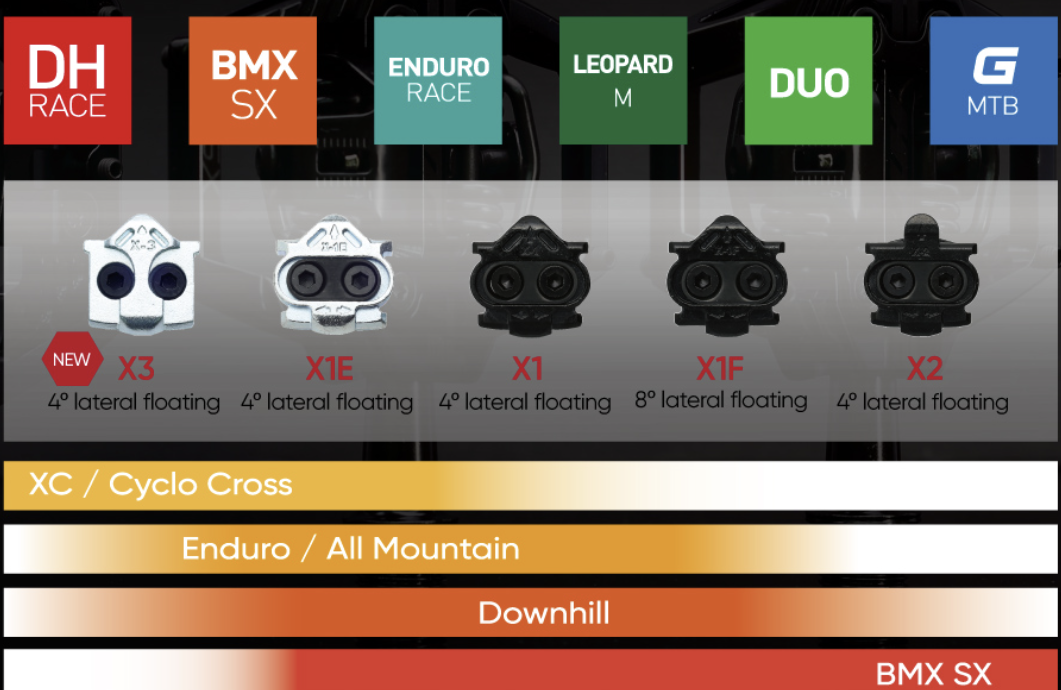
The cleat system is - like most of the HT website - fairly poorly explained, but there's multiple options to suit your needs, including some very high release tensions aimed at BMX.
Riding Impressions
On my first rides, entry and exit operated on the same mechanical motions most clipless pedal users will be used to. There wasn't much of an adjustment period at all really, but I wasn't able to get spring tension quite as low as I like; this may not be an issue for most as I tend to run very light tension.
While the motion may be familiar, the sensation during release is different, prolonged. I find exiting is less of a BANG and more of a poooop. The spring release happens over marginally more degrees of rotation. The difference is quite subtle, and not detrimental; I haven't ever been unable to get out in time on the trail, but it feels slightly foreign.
I still occasionally struggle getting attached to these pedals in tricky situations. It's not uncommon around here to have incredibly short run-ins to technical sections, and that trackstand moment of clipping in before dropping in is critical. More than a few times I've been left rolling down a feature I'd really like to be clipped in for, but unfortunately my back foot didn't succeed. I'm not going to say my hit rate was perfect with SPDs, but it was better. Chalk this up to decades of muscle memory or the mechanism itself, I've no way of knowing which it is.
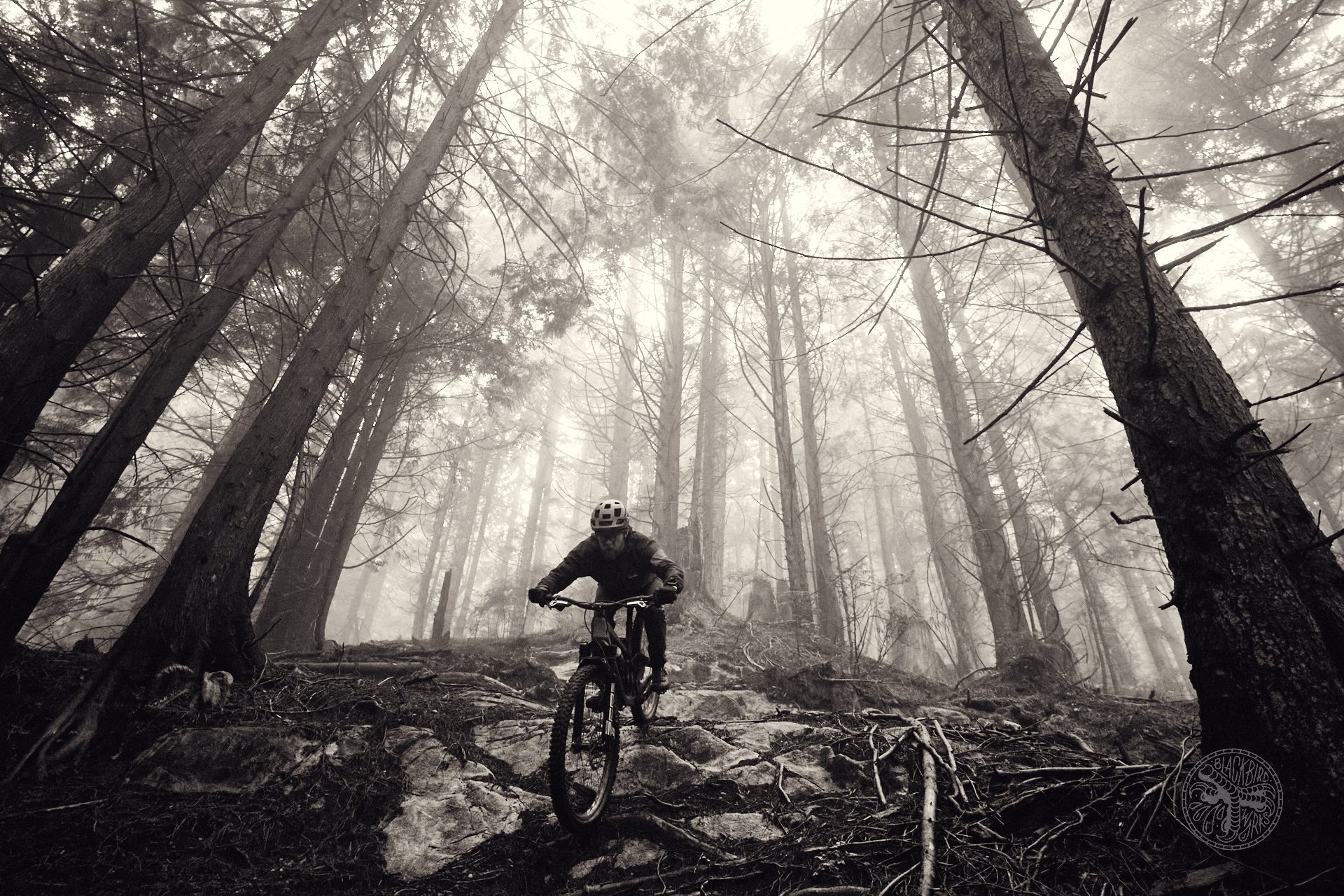
While not visible, I dabbed my left foot at the entrance to these rock steps, and spent the ride down really, really, really, really wishing it was clipped in but unable to find the sweet spot.
All three sets of spindles have loosened up somewhat and judging by the thick, highly viscous grease that's oozed out I'd wager that once the bushings have broken in, a quick teardown and replacement with a light grease would loosen things way up. That will be a summertime experiment. It's too wet and mucky and I wash my bike nearly every ride here in the winter, so that thick grease is welcome. HT includes the 8mm tool needed for the teardown in the original box, a nice touch.
Durability is important for a pedal - in the mountain bike realm, not only is there high peak loading on landings, but also the constant threat of smashing into rocks. This is especially true of the huge platform on the X3, but both the X3 and T2 have shrugged off all impacts without issue so far, and the bushings/bearings have no play.
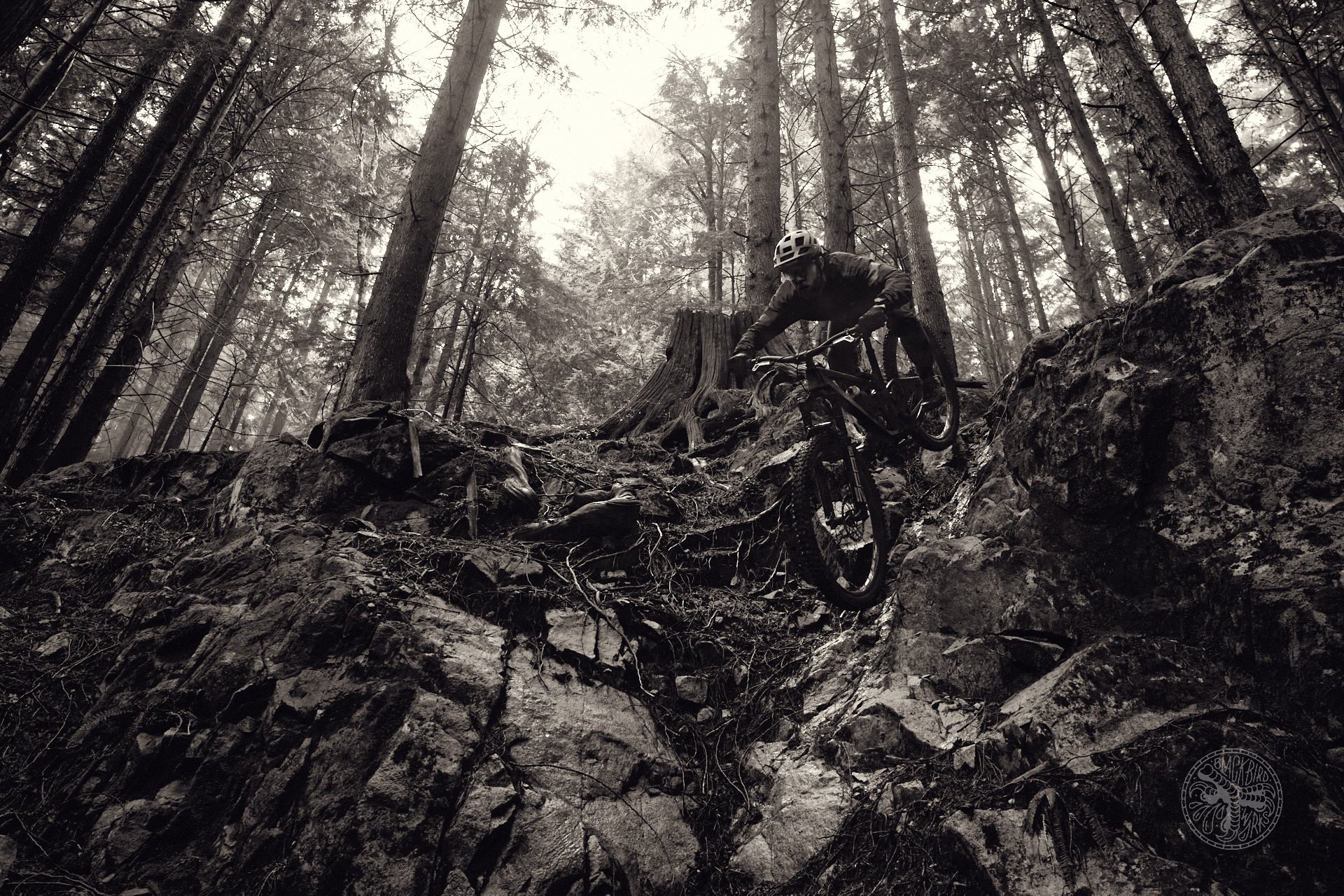
A classic Shore move right at the top of the trail - it's things like this that push me to prefer the T2-sized platform. Bash a pedal through here and the next chute you ride will be the ER Couloir.
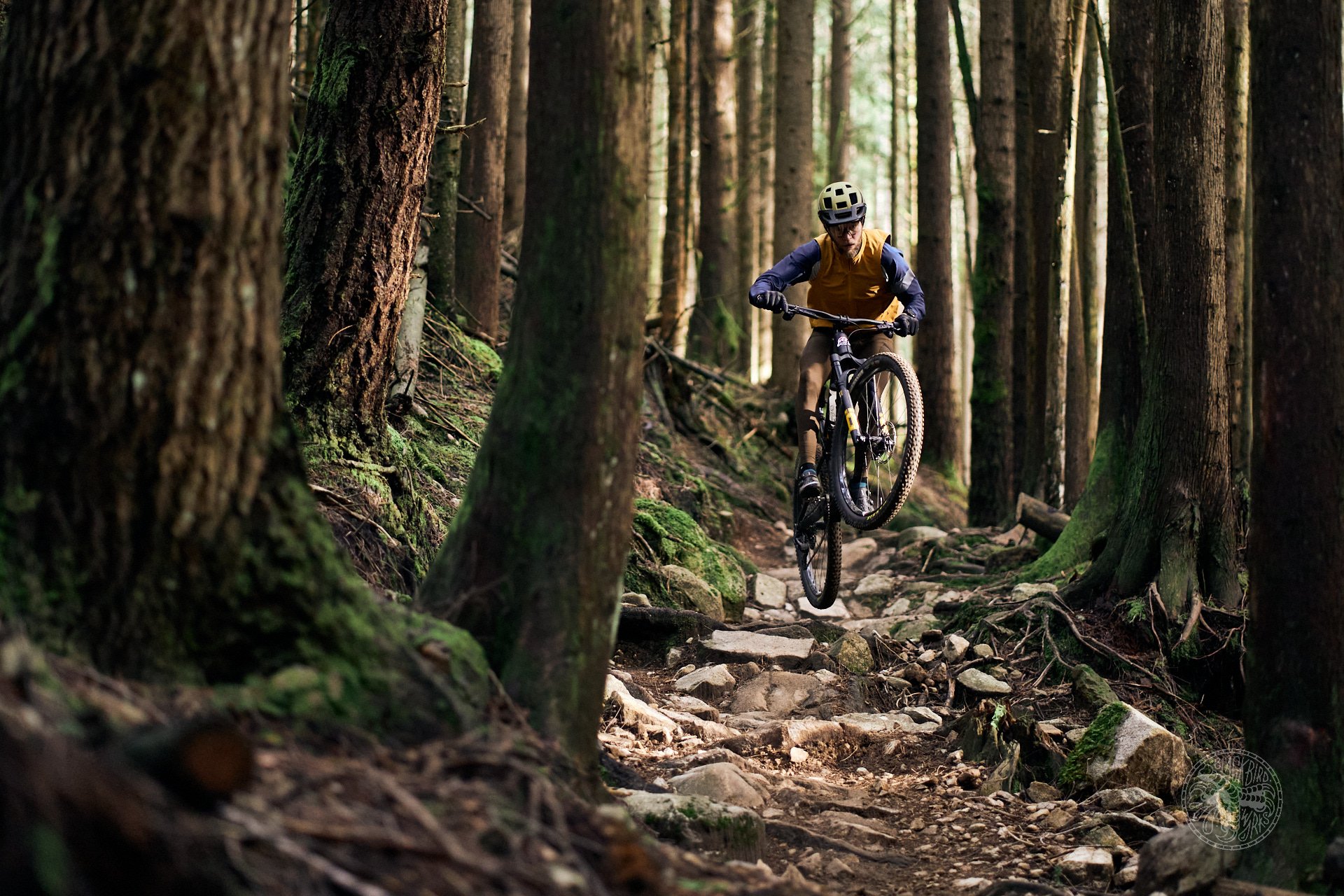
Different kit, different bike, same T2 pedals. We'll talk about the yellow umlaut stickered bits another day.
I tried the X1F for a few rides, but as it turns out more float isn't for me. The feeling was just too vague, and while I like low tension some 'walls' are needed. This is purely a personal preference thing. The larger float will be a selling feature for some customers.
On the gravel side of things, there's not too much to say, in the best way. Clip in, clip out, the range of tension and float are more than acceptable for me, and I've had no durability issues. It's worth noting that any of the titanium-axled variants come with a 176-pound rider weight limit, which seems quite low.
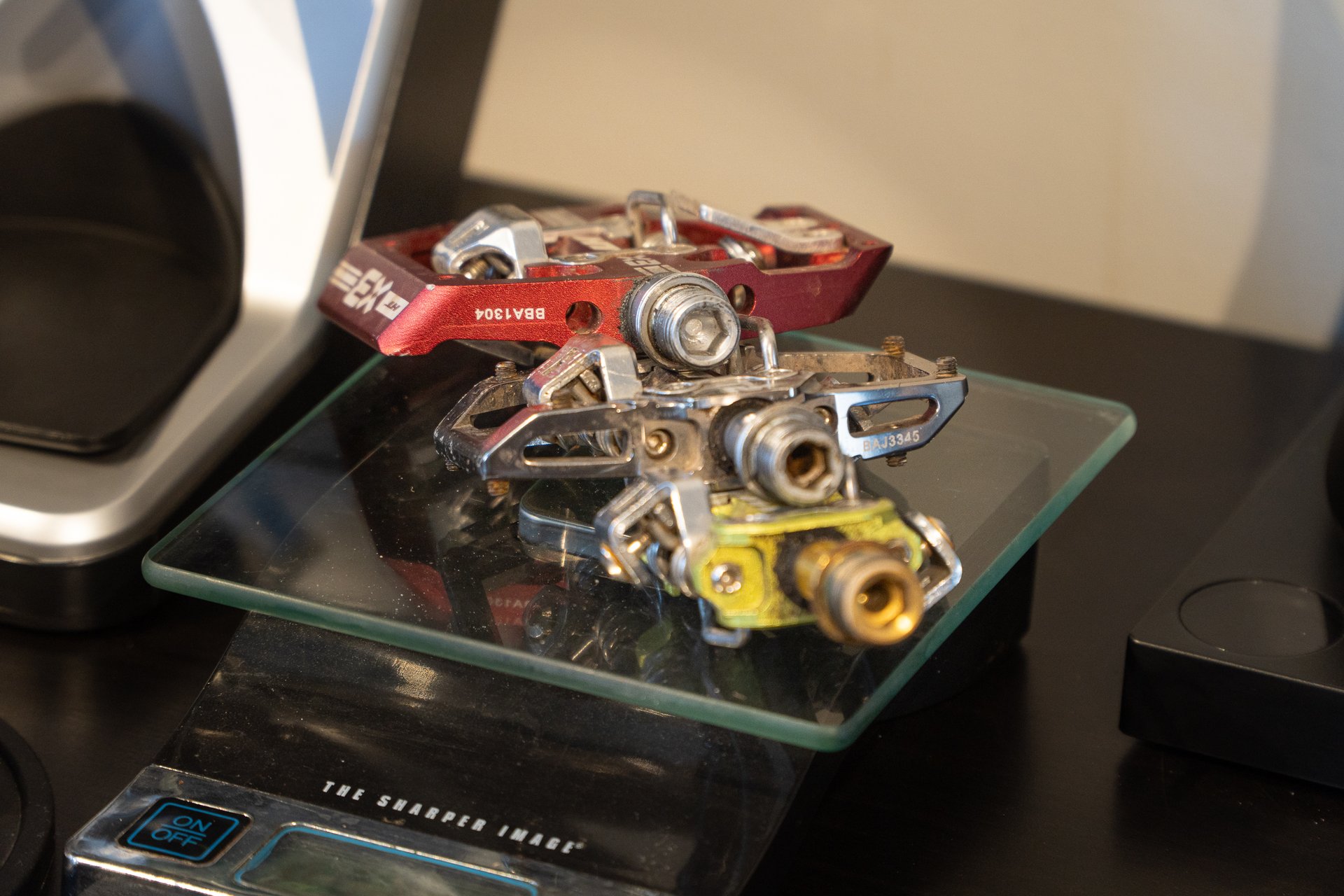
While not freely spinning, all of the spindles have loosened up nicely.
Conclusion
Overall the X3 is a larger platform than I want or need. I ride in fairly stiff shoes and really dislike smashing pedals into things; the T2s provide plenty of platform for me and are much less likely to make contact with the ground. I could easily run the T2 on all my mountain bikes and be happy. If you want the bigger platform option it's there for you. I'm not going to move to a zero-platform M2T style pedal on my XC bike any time soon, but they've been a great gravel pedal (a realm where, admittedly, I have limited criteria beyond "hold my feet when I want them to," have a reasonable weight, and are compatible with the rest of my pedals).
It's clear that there's nothing groundbreaking about how the HTs are meant to function; the Taiwanese company has a long history of manufacturing and found a path through the minefield of clipless pedal IP to a competitive product that's very adjustable, and comes in a full rainbow of colors. They have good home serviceability and I have no real longevity or durability concerns.
If you're into more float than SPDs, want much stronger retention than many competitors offer, or simply want to relive 90s anodization and taste the rainbow, I'd stay the HT system is worth a closer look.
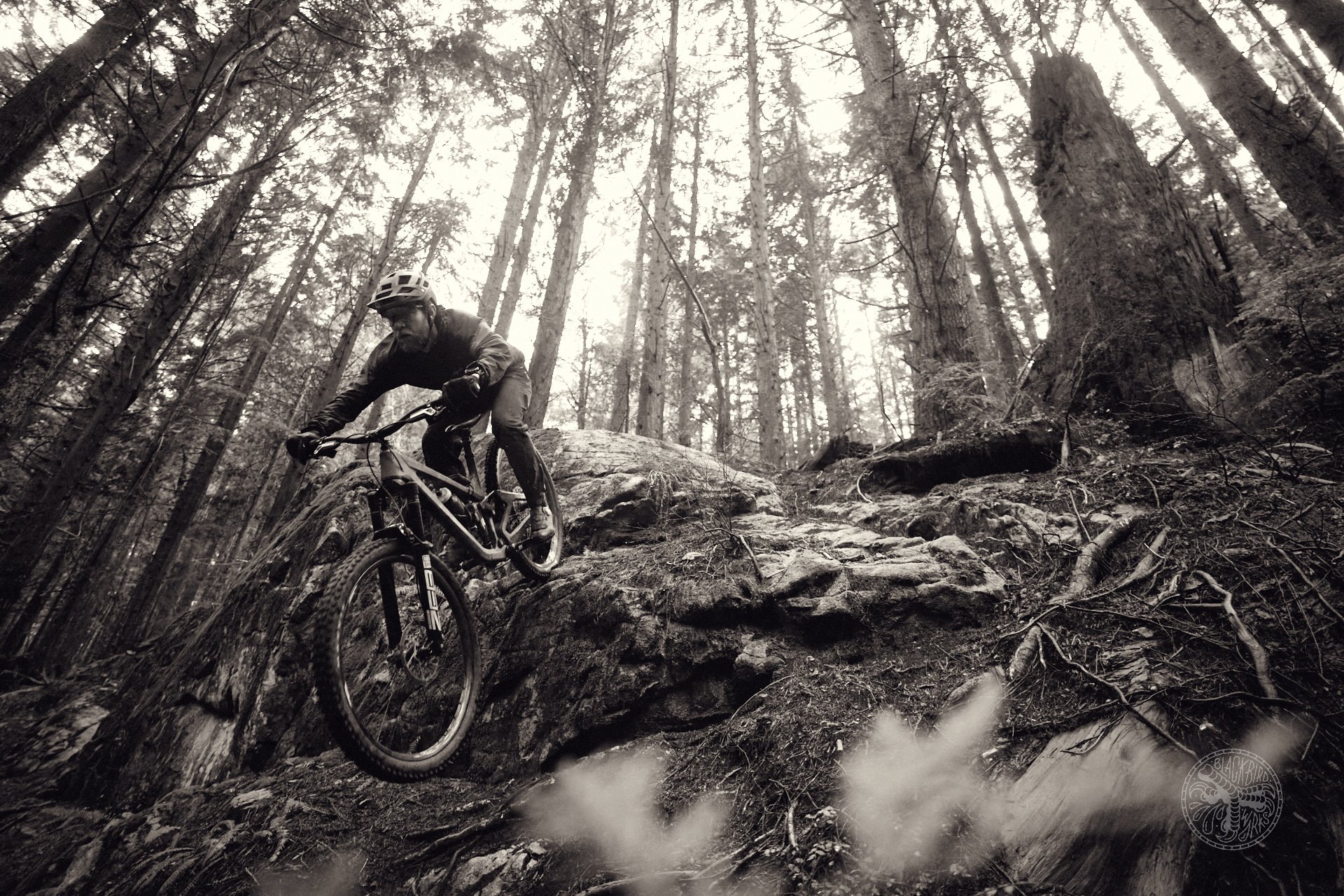
In Maxxis (and Arrival) we trust.
HT X3 Pedals: 200 - 240 USD (280 - 320 w/ Ti axles)
HT T2 Pedals: 160 - 200 USD (240 - 280 w/ Ti axles)
HT M2 Pedals: 140 - 175 USD (234 - 274 w/ Ti axles)
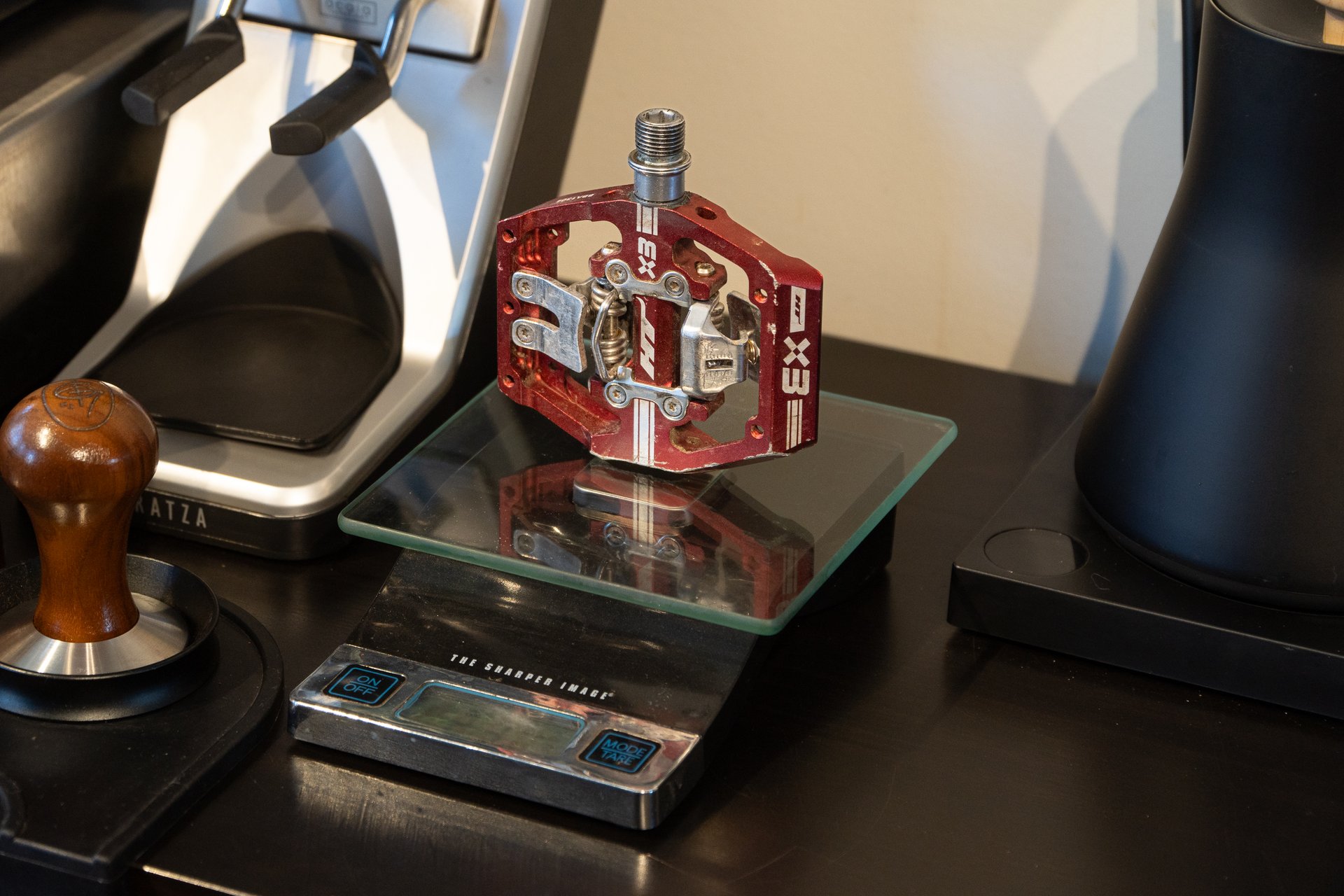
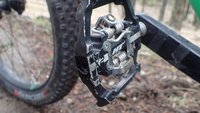
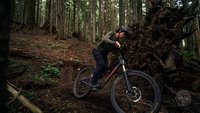
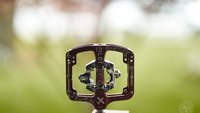
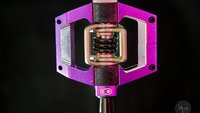







Comments
Ken Kienow
2 months, 1 week ago
Looks like you're riding pants-less in the third to last photo, haha!
Reply
Cooper Quinn
2 months, 1 week ago
Why wear a skinsuit when you can just wear skin?
...stay tuned for more of that day's kit next month. :)
Reply
dbozman
2 months, 1 week ago
A ran a couple pair of T2s awhile back. Coming from SPDs, I REALLY liked the aesthetics and functionality. Personally, with the X1 cleats, I found release tension to be pretty equivalent to Shimano.
Maintenance-wise, it’s a different story from SPDs. I’m in a dry climate and basically never touch the Shimano pedals. The HTs do require more maintenance and the bushings wear out quickly. Their USA-side service appeared to be a random dude in the Midwest who has since gone dark.
If it weren’t for maintenance, these would be the only pedals I’d run.
Reply
Cooper Quinn
2 months, 1 week ago
The T2 is a great looking pedal, I agree.
See below re: HT USA.
Reply
dolface
2 months, 1 week ago
Agree w/ you on maintenance and the service tool-kit is very expensive (~USD$130). I found this post on doing it without the proprietary too: ls but haven't tried to replicate it yet: https://www.pinkbike.com/forum/listcomments/?threadid=174518&pagenum=2#commentid6605405
Reply
Perry Schebel
2 months, 1 week ago
+1 for the coffee nerdery
Reply
Cooper Quinn
2 months, 1 week ago
NRG distributes HT here in Canada... and they sent some coffee with the pedals. So it seemed appropriate.
Reply
Perry Schebel
2 months, 1 week ago
back when i was working in a shop (something like a quarter century ago), we'd get oso negro in our NRG shipments (they were in the same block); cool to see the tradition still lives on.
Reply
Cooper Quinn
2 months, 1 week ago
Don't worry, there was also Jolly Ranchers.
Reply
ReformedRoadie
2 months, 1 week ago
Hopefully CRC's ridiculous debt of unpaid Haribu doesn't put an end to this.
Reply
Deniz Merdano
2 months, 1 week ago
I wanna see your WDT setup
Reply
danithemechanic
2 months, 1 week ago
Whew i didn't know they offered such an array of cleats!
Cooper this would be the perfect time for a teardown article, the amount of tiny parts these pedals rely on is ridiculous.
And then people complain about Crank Brothers...
Reply
Agleck7
2 months, 1 week ago
I love my HTs. The mechanism has the best feel and most consistency of any pedal ive tried. The hold is solid but I never have a problem getting out. Was worried switching from Mallets but it’s been great.
Reply
AndrewR
2 months, 1 week ago
I went the other way as despite loving everything about the HT T2 (extra release tension, defined release zone, light, colours ) I just could not tolerate the extremely short service intervals as the grease would just not stay in/ on the axle. They required a re-build half way through a four day Chilcotin tour which is hardly a reassuring sight for guests that the guide needs to re-build his bike half way through their trip. This meant carrying a small tube of grease and the slim fit nut socket, as well as an extra clean rag and then having to do one more chore in camp in addition to keeping guests' bikes running (no offence but some people have no idea about basic bike maintenance!!).
Whilst I understand that the constant wet-dry, with stream crossings and the powdered lava ash, are a challenge to all mechanical parts of the bike (who knew that pedal springs could get so dry that they don't want to release the cleat?).
I find that Crankbrothers are easier to maintain (including availability of parts and cleats), don't dry out and jam, the grease stays on the axles for 1500 km, you can tune the non-clip in grip through the pins and you still get a choice of three colours!! Yes the cleats wear quickly, especially on hike-a-bike/ guiding shoes, and a rock hit on the underside can pop your cleat out, but the cleats are a cost of running the system which seems pretty bomber in the long run.
Reply
Cooper Quinn
2 months, 1 week ago
Yeah having to tear them down at the top of Deer Pass would be a bit of a non-starter for me, too!
Reply
mutton
2 months, 1 week ago
Thanks for the review. I had been looking forward to this. I run two sets of T1s and a pair of T2's on my three bikes. The T2s were introduced in 2022 and are the new version of the T1's. My left ankle is a tad gimpy and wants to supinate under load so I like the firm release mechanism. I run the X1F cleat on my left shoe only. The pedals definitely need extra love - regular grease and tensioning of the spindle nut.
I find it a big bummer that HT doesn't seem to have any customer support in the US. T2 rebuild kits are not available and I have spent weeks trying to get hold of someone. A guy Cam@HT sent me a couple emails and then went dark last week after offering to help. My LBS was able to inform me yday that the rebuild kit is unavailable until 5/1/24.
This lack of customer support / information is a red flag imo. With one pair of pedals not safe to ride - I'm in a pickle
Reply
Cooper Quinn
2 months, 1 week ago
This came up in Deniz's piece last week as well w.r.t. HT USA - I've reached out to the Canadian distributor who's looking into it. If/when I hear any news I'll report back here.
Very cool to hear about the different cleats on different shoes working for you! I love a unique use case like that... because I'm sure its not a unique problem, and hopefully someone else reads it and has an a-ha moment.
Reply
mutton
2 months, 1 week ago
Thank you Cooper. I was just thinking how I can call / email / live chat or even have a whiskey with most of the manufacturers or support crew of parts on my current or former bikes. It really gave me pause about the decision process of what gear to run and might be an interesting topic to explore - degree of separation from your gear
Reply
Mammal
2 months, 1 week ago
Probably the cheap-ass side of me wondering, but I'm curious about the price for the proprietary cleats.
After 25 years of absorbing new Shimano cleats for next to nothing, I was shocked to find out that they're around $30 a set now, everywhere I look. That's a non-trivial amount IMO. I also remember a new set coming with Shimano SPD shoes in the past (maybe I'm making that up), but not anymore.
Reply
Perry Schebel
2 months, 1 week ago
given shimano pedals are more or less immortal, charging premium $ for cleats is probably the only way they make $.
of course, unkillability hasn't stopped me from buying multiple sets of xt trails; "ooh! the new iteration is 2.5mm wider! must have!"
Reply
Timer
2 months, 1 week ago
Thats a real "issue". I own two sets of PD-M540s and a set of PD-M647. Which means i probably won't ever need to buy another Shimano pedal in my life.
However, i just checked and cleats are 10€ here in Europe, so i'm wondering whats going on with cleat prices in Canada atm?
Reply
Bryce Borlick
2 months, 1 week ago
Why did the spring-loaded body disappear from clips? A la pdm424, 636 etc. Seems like I could slap my cleat into those in any sloppy manner but dh pros aren’t using them so there must be something I’m missing.
Reply
Please log in to leave a comment.